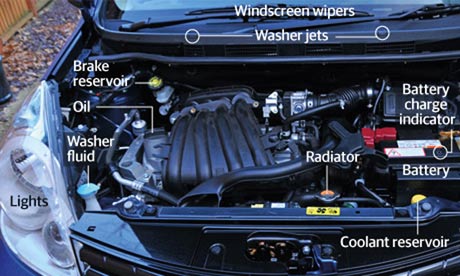
The seemingly unending (and ever-increasing) complexities of the modern automobile are deterring more and more owners from carrying out the basic maintenance and repairs that previous generations of motorists thought nothing of doing themselves, a survey published this week confirms. People are less and less confident about poking around under the bonnet, and more and more willing to pay someone else to do it (plus with many modern cars, they have no choice). But according to Trevor Barkham of the AA's technical team, there are still plenty of straightforward tasks that today's motorists can and should have a go at – saving money in the process.
Lights
In some modern cars, changing a headlamp, side light or indicator bulb is "a nightmare". In others, it really couldn't be easier: lift a lever, twist a knob, and you're there. "As with many jobs, the advice is: look at the manual," says Barkham. "Either it will tell you how to do it with clear instructions and illustrations, or – in the case of Xenon bulbs, for example – it will recommend you take the car to a dealer."
Windscreen wiper blades and washer jets
Worn wiper blades are "really easy to change", says Barkham, but many drivers get lost when they try: "This really is a job every driver should be able to do. Again, look at the manual." Likewise, a simple pin will clear blocked washer jets, whose technology hasn't changed since the 1960s.
Washer fluid
Another easy job. First, know where the reservoir is ("You'd be surprised," says Barkham, "how many people top up their radiator or engine oil with screenwash.") Don't put antifreeze in it (that'll ruin your paintwork), avoid washing-up liquid (too many bubbles), and if you don't have a proprietary screenwash to hand, water will do but top up with screenwash as soon as you can to inhibit bacteria growth.
Brake reservoir
A warning light on the dash will come on if this is low. Often it's an indication of another problem, such as worn brake pads, so if you do top it up (always using an unopened bottle of fluid) and the light comes on again, get those checked.
Oil level
The most important check every motorist should do: preferably once a week, always before a long journey. Locate the dipstick (not visible here; usually has a yellow handle), check level, and top up half a litre at a time with the right kind of oil for your car (see the manual). If the oil warning light comes on, get the car checked immediately – it means low oil pressure is already damaging the engine.
Radiator and coolant reservoir
You normally only need to look at the reservoir, says Barkham, which is clearly marked with easily read level indicators. Check it regularly: on most modern cars, that's all you usually need to do. If the level has fallen, it most likely indicates a problem somewhere else. If you do top it up, open with extreme caution after the engine has cooled.
Battery
Motorists don't need to top up the electrolyte as they once did, but many modern batteries feature a charge indicator (usually a little green ball): if it disappears, you're low on charge. And if you don't use your car much, use a battery maintainer – an underused battery will fail within a year.

